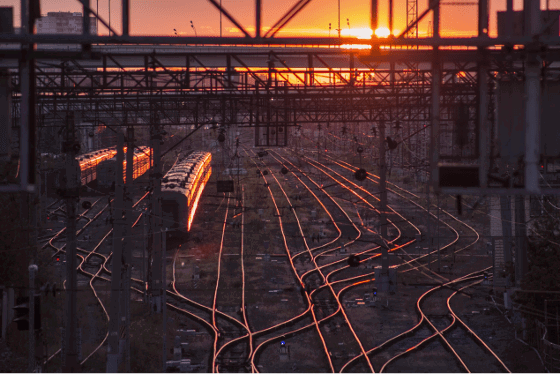Rethinking Rail Maintenance With 3D Printed Spare Parts

Rail networks have been an integral part of transportation and the supply chain for centuries. But maintaining them continues to plague operators worldwide.
One single broken component can sideline an entire train. It can delay schedules and frustrate passengers or customers, two outcomes that rack up costs fast. Traditionally, rail maintenance has relied on long lead times and high-cost spare parts. Add to this equation increasingly unpredictable supply chains.
3D printing offers a compelling alternative. Let's take a closer look.
The State of Rail Maintenance Today
Rail maintenance has two goals: keep fleets running smoothly and manage the high costs of spare parts storage and procurement. Here's how it works:
- Parts are mass-manufactured and stored in warehouses—an expensive process with high overhead costs.
- When a part fails, it must be sourced from inventory. This means waiting for it to be shipped and installed.
- If a part is obsolete or out of stock, operators face costly delays, sometimes even months-long waits for a single replacement component.
For a system that depends on efficiency and reliability, this model creates unacceptable risks.
Spare parts are either:
- Too expensive to stock in large quantities
- Too slow to procure when urgently needed
- Simply unavailable, forcing rail operators to find workarounds or retrofit ageing components
How 3D Printing Improves Rail Maintenance
Instead of waiting weeks (or months) for a part, operators can now print spare parts on demand when and where they need them.
What does this mean in practice?
- Have digital spare part inventories: No need to stockpile thousands of components; instead, parts are stored digitally and printed when required.
- Recreate obsolete parts: Older trains don't need to be decommissioned because of unavailable spare parts.
- Manufacture directly on-site: Maintenance facilities can print parts locally to mitigate supply chain risks.
- Prototype and test faster: Engineers can redesign and iterate parts in days instead of months.
Benefits of 3D Printing Rail Parts
Integrating 3D printing into rail maintenance, operators can expect three major benefits:
1. Less Downtime and Faster Repairs
- Traditional manufacturing can take upwards of weeks or months to create and deliver just one replacement part. 3D printing, in contrast, can produce a certified component in just hours or days. Trains get back on track faster.
- Reverse engineering means discontinued or obsolete parts can be reproduced. Ageing fleets stay operational for longer, which is better for the operator's bottom line and the environment.
2. Lower Costs and Greater Efficiency
- 3D printing eliminates the need for mass production. Upfront investment in spare parts is no longer necessary.
- It also cuts warehousing costs by shifting from "make-to-stock" to "make-to-order" production.
- It minimizes waste, as only the necessary material is used—there is no excess scrap from traditional machining.
3. Sustainability and Smarter Supply Chains
- 3D printing reduces the overproduction of spare parts. Companies benefit from a leaner, more efficient supply chain. This cuts carbon emissions. Manufacturing takes place locally rather than shipping parts across the world.
- 3D printers can use advanced materials (including metal and polymer composites) to create lighter, more energy-efficient components.
The Future of Rail Industry Maintenance
Rail networks worldwide are already investing in 3D printing to rethink maintenance strategies. For example:
- Deutsche Bahn has used 3D printing to reduce train downtime, manufacturing hard-to-source parts for ageing locomotives.
- Alstom is exploring 3D-printed spare parts for high-speed trains.
- Siemens Mobility has opened dedicated additive manufacturing hubs to print rail components faster than traditional supply chains allow.
For rail operators, the question is no longer if but when to integrate 3D printing into their maintenance strategy.
Image via https://unsplash.com/photos/black-train-on-railway-during-golden-hour-I0_UBfHbnkI
Related Articles

Future Trends In 3D Printed Electronics






